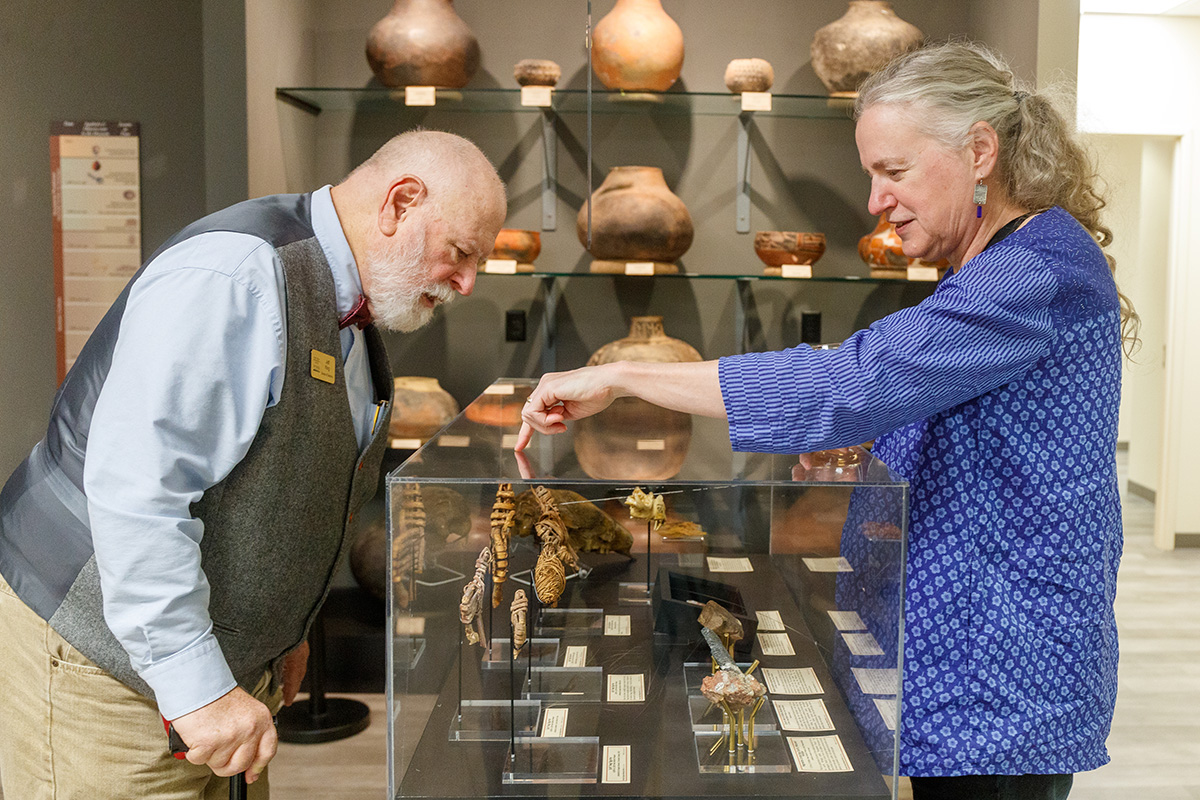
The Verde Valley Archaeology Center recently opened a new exhibit, “Grand Canyon — Three Worlds: Inside the Grand Canyon National Park Collections.”
The exhibit features artifacts found in the Grand Canyon organized by three time periods, the Archaic period, the Ancestral Puebloan period and the Historic period.
Artifacts on display from the Archaic period, considered to run from 10,000 BCE to 400 BCE, include fur and skin from a giant ground sloth, the upper mandible of an American cheetah, rocks that are billions of years old and various split twig figurines.
The split twig figurines are made of willow wands wrapped around themselves to form the shape of an animal, typically smaller game animals such as deer and wild sheep. Originally thought to have been children’s toys, these are now believed to have been offerings left at shrines, perhaps during pilgrimages to sacred sites in the canyon. One of the figurines has a spear piercing it, potentially signifying that it was an offering for a successful hunt.
The Ancestral Puebloan period is dated from 400 BCE to the Spanish Entrada — 1540 to about 1760 CE — and is represented by artifacts such as an obsidian blade, a ladle, a pottery vessel, an axe head and corn cobs.
Locals had adopted agriculture by this period, as can be seen from the variety and sizes of corn cobs recovered by archaeologists. Spindle whorls indicate the weaving of cotton, which in turn implies the development of cotton cultivation in the canyon.
The Historic period is considered to have run from 1800 to 1950 and was the time of the exploration of the canyon by European arrivals. Artifacts from this period include items left by those exploring the canyon, such as a liquor bottle wrapped in a prohibition pamphlet and playing cards. Artifacts related to the notorious Kolb brothers, Emery and Ellsworth, early photographers and explorers of the canyon, are also part of the exhibit, including an oar from one of the Kolb brothers’ boats.
The exhibit also features early National Park Service artifacts such as a variety of different NPS badges, one of which belonged to the very first superintendent of the park.
Monica Buckle, Executive Director at VVAC, said that many Arizona natives have never had the chance to see the Grand Canyon and that this exhibit will allows them to experience the canyon in the Verde Valley.
Jeffrey H. King, director of Collections, spoke about each historical period and their significance. King works professionally with the split twig figurines found in Stanton’s Cave and has been creating illustrations of these figures for research purposes.
Buckle said that the exhibit provides very different perspectives on the same place, as highlighted in the display descriptions written by Kim Besom, curator at the Grand Canyon Museum Collection, and Piivayouma, aka Lloyd Masayumptewa, a Hopi who is superintendent of Montezuma Castle and Tuzigoot national monuments. Both are nevertheless concerned with the preservation of the canyon.
“We’re a community anchor here in Camp Verde and the greater Verde Valley region,” Buckle said, thanking volunteers for their efforts to keep the museum afloat.
The museum and exhibit are open Tuesday through Saturday from 10 a.m. to 4 p.m. For more information, visit verdevalleyarchaeology.org.